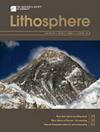Lithospheric Structure and Extensional Style of the Red Sea Rift Segments
IF 1.7
4区 地球科学
Q3 GEOCHEMISTRY & GEOPHYSICS
引用次数: 0
Abstract
Abstract The Red Sea provides an opportunity to study the processes during the transition from continental rifting to early-stage seafloor spreading during ocean initiation. We delineate variations of lithospheric architecture and the nature of extension along the Red Sea region through joint interpretation of gravity and geoid anomalies and gravity-topography transfer functions. We use lithospheric-scale models to compare stretching factors with upper mantle gravity anomaly, residual mantle Bouguer anomaly, and effective elastic thickness. Based on our observations, the Red Sea is divided into four segments; each having distinct lithospheric characteristics and stretching styles. These are: (i) southernmost Red Sea and Danakil having regionally weak and stretched lithosphere, (ii) southern Red Sea with fully developed seafloor spreading and asymmetric lithospheric architecture, (iii) central Red Sea having discontinuous magma accretion with newly formed seafloor spreading, and (iv) northern Red sea with a stronger lithosphere and limited stretching revealing a stage of continental rifting. In these segments, lithospheric stretching correlates with regions of weak lithosphere, including a regime of sublithospheric plume channel beneath the southern Red Sea. The Zabargad fracture zone between the central and northern segments is revealed as a major lithosphere-scale boundary that may act as a barrier to the propagation of seafloor spreading into the northern Red Sea. The weak and highly stretched lithosphere in this region may indicate the onset of a new spreading cell. Our results conclude that the evolution of the Red Sea is more complex than the previously suggested kinematic models of simple “unzipping” and illustrate that several extensional styles can exist within different segments during the initial stages of ocean formation.红海裂谷段岩石圈构造与伸展样式
红海为研究大陆裂陷向早期海底扩张过渡的过程提供了一个契机。通过重力和大地水准面异常以及重力-地形传递函数的联合解释,刻画了红海地区岩石圈结构的变化和伸展的性质。利用岩石圈尺度模型,将拉伸因子与上地幔重力异常、残余地幔布格异常、有效弹性厚度进行对比。根据我们的观察,红海分为四个部分;每个都有独特的岩石圈特征和伸展风格。它们分别是:(1)红海最南端和达纳基勒地区的岩石圈区域性薄弱和伸展;(2)红海南部的海底扩张发育完全,岩石圈结构不对称;(3)红海中部的岩浆不连续增生,海底扩张新形成;(4)红海北部的岩石圈较强,伸展有限,显示出大陆裂陷阶段。在这些段中,岩石圈伸展与弱岩石圈区域相关,包括南红海岩石圈下地幔柱通道。中部和北部段之间的扎巴尔加德断裂带是一个主要的岩石圈尺度边界,可能作为海底向红海北部扩张的屏障。该地区岩石圈的薄弱和高度拉伸可能预示着一个新的扩张细胞的开始。我们的研究结果表明,红海的演化比之前提出的简单的“解压缩”运动学模型更为复杂,并说明在海洋形成的初始阶段,不同的段内可能存在几种伸展样式。
本文章由计算机程序翻译,如有差异,请以英文原文为准。
求助全文
约1分钟内获得全文
求助全文
来源期刊

Lithosphere
GEOCHEMISTRY & GEOPHYSICS-GEOLOGY
CiteScore
3.80
自引率
16.70%
发文量
284
审稿时长
>12 weeks
期刊介绍:
The open access journal will have an expanded scope covering research in all areas of earth, planetary, and environmental sciences, providing a unique publishing choice for authors in the geoscience community.
 求助内容:
求助内容: 应助结果提醒方式:
应助结果提醒方式:


